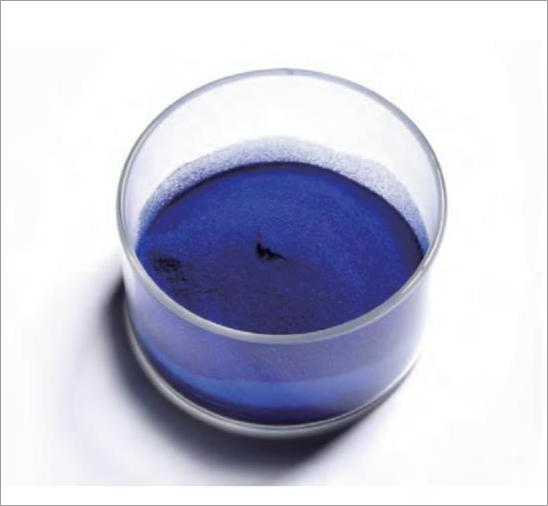Copper peptide also named GHK-cu is a complex formed by the combination of tripeptide-1 and copper ion. Research data show that copper in animal’s body plays an important role in in different ways, mainly through the influence of copper on antioxidant enzymes. There are many important enzymes in human body and skin that need copper ions. These enzymes play a role in connective tissue formation, anti-oxidation and cell respiration. Copper also plays a signaling role, which can affect the behavior and metabolism of cells. When Copper peptide soluble in water, it shows color royal blue which also called Blue Copper peptide in industrial field.
Research shows that Copper peptide has multi benefit for skin care, which has a big potential application in cosmetic industry.
1. The role of copper peptide in skin remodeling
The Research shows copper peptide modulates different metalloproteinases in the process of rat skin reconstruction. The activity of the enzyme promotes the decomposition of extracellular matrix proteins, which can balance the decomposition of extracellular matrix proteins (ECM proteins) and prevent excessive skin damage. The copper peptide increases the core proteoglycan. The function of this proteoglycan is to prevent the formation of scars and reduce the level of transforming growth factor (TGF beta), which increases scars by regulating the assembly of collagen fibrils.
2. Stimulates collagen synthesis
Many experiments have confirmed that tripeptide-1 stimulates the synthesis of collagen, selective glycosaminoglycan and small protein glycan deproteinization. In addition, it can also regulate the synthesis of related metalloproteinases. Some of these enzymes will accelerate the decomposition of extracellular matrix proteins, while others can inhibit the protease activity. This shows that the copper peptide can regulate the protein level in the skin.
3. Anti inflammatory and antioxidant
It was found that copper peptide inhibits inflammation by reducing the levels of inflammatory cytokines such as TGF-beta and TNF-a in acute phase. Tripeptide-1 also reduces oxidative damage by regulating iron level and quenching toxic products of fatty acid lipid peroxidation.
4. Promote wound healing
Many animal studies have confirmed that blue copper peptide has the ability of wound healing. In the rabbit experiment, the blue copper peptide can accelerate wound healing, promote angiogenesis, and increase the content of antioxidant enzymes in the blood.
5. Restore the function of damaged cells
Fibroblasts are the main cells of wound healing and tissue regeneration. They not only synthesize various components of extracellular matrix, but also produce a large number of growth factors. A study in 2005 showed that tripeptide-1 could restore the viability of irradiated fibroblasts.
Copper peptide is a kind of polypeptide with anti-aging and repair properties. It can not only promote the production of type I, IV and VII collagen, but also promote the activity of collagen synthesis cells fibroblast, which is a very excellent anti-aging ingredient.
In terms of repair, copper peptide can protect fibroblasts stimulated by UV, improve their activity, reduce the secretion of MMP-1, effectively deal with inflammatory factors produced by sensitivity, maintain the skin barrier function damaged due to external stimuli, and has excellent anti allergic and soothing capacity. Copper peptide combines anti-aging and repair, which is very rare in the current anti-aging and repair materials.
Post time: Nov-07-2022


